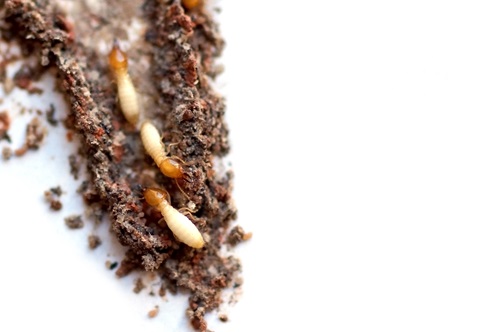
Picture this: You’re diligently vacuuming your beautiful hardwood floors, and suddenly, your vacuum’s attachment glides effortlessly through your living room’s baseboard. Instead of resistance, you discover that the wood is soft and yielding. Upon closer inspection, you make a disheartening revelation – your home has fallen victim to a termite infestation. Now, you’re left pondering the next pest control steps you need to take, eager to assess the extent of the damage and the associated repair costs.
Regrettably, many homeowners only detect termite problems after up to eight years have passed, during which these minuscule creatures can wreak havoc on a property.
Pest Control Tips For Termites
Subterranean Termites
Subterranean termites are notorious for causing over $1 billion in damages to homes across the United States annually. Repairing significant structural damage can amount to tens of thousands of dollars, and in most cases, home insurance does not cover these costs.
Signs of a termite infestation include noticeable termite shelter tubes on wooden surfaces or wood that appears to be infested. If you attempt to poke these surfaces with a stick or screwdriver, you’ll find that they easily yield. When you tap the wood with the handle, it might produce a hollow sound.
Other Wood-Damaging Insects
Apart from termites, various other insects can inflict damage upon your home. For instance, carpenter ants seek out decayed or moist wood to burrow tunnels, potentially causing structural harm.
Carpenter bees, on the other hand, create entry holes in wood used for siding, decks, and eaves, establishing colonies within. The powderpost beetle is yet another destructive insect, attacking softwood, wall studs, floor joists, and other structural lumber used in furniture, cabinets, moldings, and interior rims.
pest controlAddressing the Damage
The crucial question arises: how can you tackle the wood damage in your home? Your initial step should involve enlisting the services of a pest control expert who can assess the extent of the damage. If the damage is relatively minor, it’s advisable to treat for pests like termites.
The primary goal is to eliminate them from the wood before they can inflict significant harm. You may also choose to repaint the affected areas to conceal any visible damage. However, it’s crucial to rectify any lingering moisture issues that could contribute to further wood deterioration.
In instances where termite damage is not extensive, you might be able to restore the wood’s structural integrity through an epoxy treatment. Epoxy, resembling cookie dough in texture, can be molded while wet and carved or trimmed like wood once it dries. When painted over, wood patched with epoxy appears as good as new.
This resilient substance is impervious to pests, making it an excellent option for window repairs, fixing exterior columns, molding, and door jambs. For certain areas of your home, you might even be able to repair and replace damaged wood by filling gaps with epoxy filler. However, if the damage is severe, it’s imperative to seek professional pest control in Myrtle Beach.
If you require the services of dependable pest control specialists to rid your home of pest infestations, call Zap Pest Control, Inc. We’re here to help safeguard your home.
Like our Facebook page for more information about pest control services.
Zap Pest Control Inc.
2507 Forestbrook Rd Suite G
Myrtle Beach, SC 29588
843-654-1927
http://zappests.net/
Areas Served: Surfside Beach SC, Carolina Forest SC, Conway SC, Little River SC, North Myrtle Beach SC, Socastee SC, Myrtle Beach SC

No comments:
Post a Comment